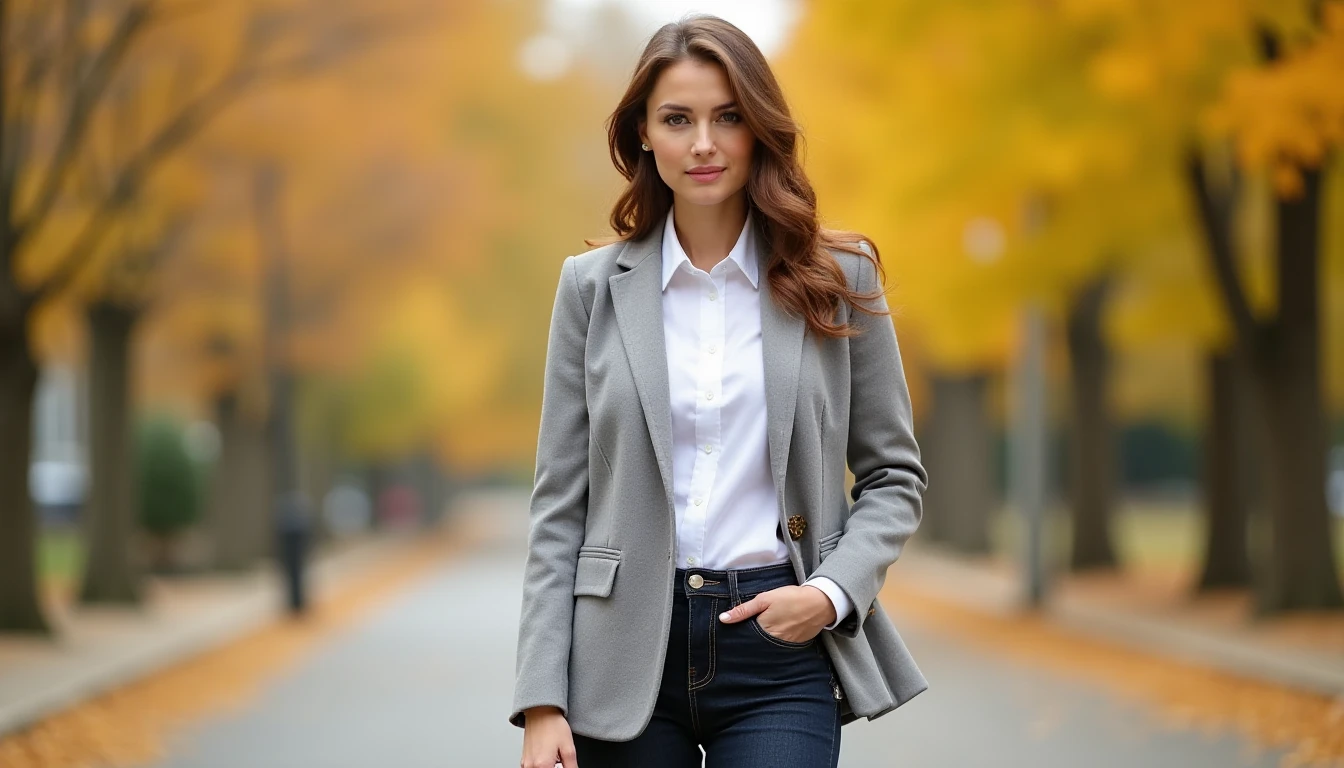Versatility in Wardrobe Staples
Seasonless fashion revolves around building a wardrobe that transcends seasonal boundaries. At the heart of this movement are versatile staples—pieces that can be styled in numerous ways, adapting to different climates and occasions. These items include timeless pieces like tailored blazers, crisp white shirts, sleek trousers, and classic leather jackets.
Tailored blazers, for instance, are a wardrobe essential that transcends seasons. A well-tailored blazer not only adds an air of sophistication but also serves as the foundation for both casual and formal ensembles. In spring and summer, it can be paired with lightweight fabrics like linen or cotton trousers for a breezy look that feels fresh and contemporary. As temperatures drop in autumn and winter, layering it over knitted sweaters or under a wool coat adds warmth while maintaining its versatility.
Crisp white shirts are another cornerstone of seasonless fashion. This wardrobe staple can be dressed up with a sleek blazer and tailored trousers for a business meeting or dressed down with jeans and sneakers for a casual outing. The beauty lies in the ability to switch between work, weekend, and evening looks simply by changing accessories—whether it’s adding a silk scarf for an elegant touch or opting for a leather belt for a more rugged appearance.

Investing in Quality Over Quantity
One of the core principles of seasonless fashion is investing in high-quality garments that stand the test of time. This approach emphasizes longevity and durability, ensuring that each piece remains relevant and functional across various seasons.
High-end materials like cashmere, silk, and wool are excellent choices for seasonless fashion because they maintain their quality over extended periods and adapt well to different weather conditions. Cashmere sweaters, for instance, offer warmth in winter without being overly bulky and can be styled with light fabrics when the weather warms up. Similarly, silk blouses provide a smooth texture that looks equally luxurious from spring through autumn.
By focusing on investment pieces rather than fast fashion trends, you not only reduce waste but also build a wardrobe that remains relevant year-round. Quality garments are designed to fit well and wear comfortably, which means they’re more likely to stay in your closet longer. This reduces the need for constant shopping trips and helps create a sustainable style that aligns with ethical consumption.
Layering Techniques for Year-Round Styling
Layering is an essential technique for seasonless fashion as it allows you to adapt your outfits according to the weather without compromising on style. The key lies in selecting versatile layers that can be added or removed depending on the temperature.
For instance, layering begins with a base—such as a fitted tee or tank top during warmer months and shifts to thermal underwear or merino wool tops as winter approaches. Over this foundation, you can add pieces like cardigans, vests, or light jackets for additional warmth without sacrificing mobility. As seasons change, these layers can be mixed and matched in various combinations, offering endless styling possibilities.
Incorporating scarves and shawls also enhances the layering effect while adding an element of elegance to your outfits. These accessories can either be worn loosely over shoulders or wrapped around necks depending on how much warmth is needed. Additionally, choosing pieces made from fabrics like cotton, linen, and polyester blends ensures comfort and breathability throughout different weather conditions.

Neutral Colors: The Key to Seasonless Style
The importance of color in seasonless fashion cannot be overstated. Neutral tones such as black, white, gray, beige, navy blue, and olive green form the backbone of a versatile wardrobe that can effortlessly transition between seasons.
Black is perhaps the ultimate neutral shade for seasonless dressing due to its versatility and ability to pair seamlessly with other colors. A well-tailored black suit jacket or pencil skirt not only looks professional but also provides a timeless elegance when worn alone in warmer months or layered over heavier fabrics during colder periods. Meanwhile, white serves as an ideal counterpart to black, offering a clean, refreshing contrast that works equally well for casual summer outfits and sophisticated winter ensembles.
Neutral tones like beige and navy blue are particularly useful for creating cohesive looks across different seasons because they blend effortlessly with various textures and patterns. Beige trousers or blazers pair beautifully with light pastel shades in spring and summer but also complement darker hues when layered under a coat or paired with woolen accessories during fall and winter. Navy, on the other hand, offers a sophisticated touch to any outfit while being versatile enough for both daytime casual wear and evening events.
Sustainable Practices in Seasonless Fashion
Incorporating sustainable practices into seasonless fashion is not only beneficial for the environment but also enriches the longevity of your wardrobe. This approach emphasizes ethical consumption by focusing on responsible sourcing, eco-friendly materials, and minimizing waste throughout each step of production.
One way to embrace sustainability within seasonless fashion is through choosing garments made from organic cotton or recycled fabrics. Organic cotton reduces pesticide usage while recycled materials help divert waste from landfills. Brands like Patagonia and Eileen Fisher have long been leaders in sustainable practices by using these eco-friendly alternatives to create durable clothing that remains stylish year-round.
Another important aspect of sustainability lies in the care we take when washing our clothes. By following manufacturers’ guidelines and employing techniques such as cold-water washing, line drying instead of machine-drying, and spot treating stains rather than throwing garments into a full load, you can significantly extend their lifespan while reducing your environmental footprint.

